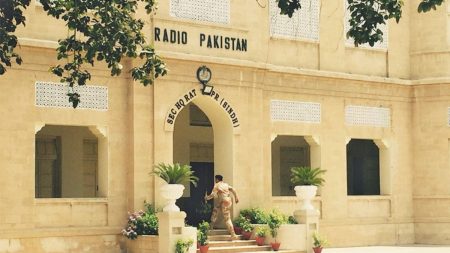Islamabad, Nov 3: World Bank’s $213 Million Project for Pakistan Flood Victims Set for Potential Restructuring. It is anticipated that the $213 million “Integrated Flood Resilience and Adaptation Project (IFRAP)” of the World Bank will be reorganized to enable prompt distribution of project funds designated for resilient home restoration and reconstruction.
According to official records, IFRAP was signed on July 3, 2023, with the goal of improving and revitalizing the lives of communities impacted by the floods of 2022 and bolstering their ability to adapt to more severe flooding in the future. As of right now, the project has disbursed the equivalent of $22.38, and its current closing date is December 31, 2028.
By fortifying institutions and information systems, the initiative aims to restore basic services including housing, WASH, transportation, agriculture, and irrigation while laying the groundwork for long-term flood resilience.
One of the project’s six components, Contingent Emergency Response, aims to build resilience and rehabilitation in the wake of flood damage, mostly in Balochistan. While the majority of the implementation will occur in the province of Balochistan, the Federal Project Management Unit (FPMU), which is situated in Islamabad, has been established by the Ministry of Planning Development and Special Initiatives (MoPDSI), the project implementing agency.
This restructuring suggests amending the Disbursement and Financing Instruction Letter (DFIL) to permit the opening of a Designated Account for Category 4 for Housing Reconstruction Unit (HRU) activities, as well as changing the withdrawal categories in Section III of the Second Schedule to the Financing Agreement, in order to ensure the project is implemented effectively and smoothly.
The formation of a separate designated account, which necessitates the production of separate IUFR and yearly financial statements, is one of the modifications that will accompany HRU’s involvement in the IFRAP project.
To manage HRU’s FM function, a specialized FMS is required. This FMS will sign the DA and obtain a client connection login in order to submit reports and complete expenditure paperwork. The Office of Auditor General will carry out its statutory audit, and a project-wide internal audit firm will also handle HRU’s IA activity.
To carry out Component 3 on home repair and restoration, a specialized implementation unit called the home repair Unit (HRU) has been set up in Quetta as an addition to the Federal Project Management Unit. Implementing partners are being chosen, and the HRU is in charge of overseeing and supervising their performance.
Data gathered by the implementing partners for Damage Assessment and Verification (DAV) will be sent to the HRU. For the disbursement of home reconstruction subsidy grant tranches, the HRU will also conduct spot checks and oversee data collecting from technical inspections as well as the DAV.
Without using a third party, the HRU will open centralized bank accounts in the beneficiaries’ preferred commercial bank branches in order to send home reconstruction grants straight into each beneficiary’s bank account.
Since there will probably be more than half a million tiny transactions involved, it is necessary to ring-fence the financial management structure under this component in order to keep distinct and clean housing subsidy records.
The existing DFIL prohibits the HRU from having a distinct designated account and mandates that all payments be made via the Federal Project Management Unit (FPMU), which is located within the Ministry of Planning Development and Special Initiatives (MoPDSI).
Because the financial management is centralized, this approach may result in inefficiencies and delays in the distribution of funds. A more efficient and responsive financial management system would be achieved by giving the HRU immediate access to the money through the revision of the DFIL and the modification of the withdrawal categories.
This modification would improve the overall efficacy and efficiency of Part 3’s execution by allowing the HRU to function more independently and react to project requirements more rapidly. Since the HRU was created expressly to carry out the duties under Part 3, the proposed revisions would also bring the financial management structure into line with the operational structure.









